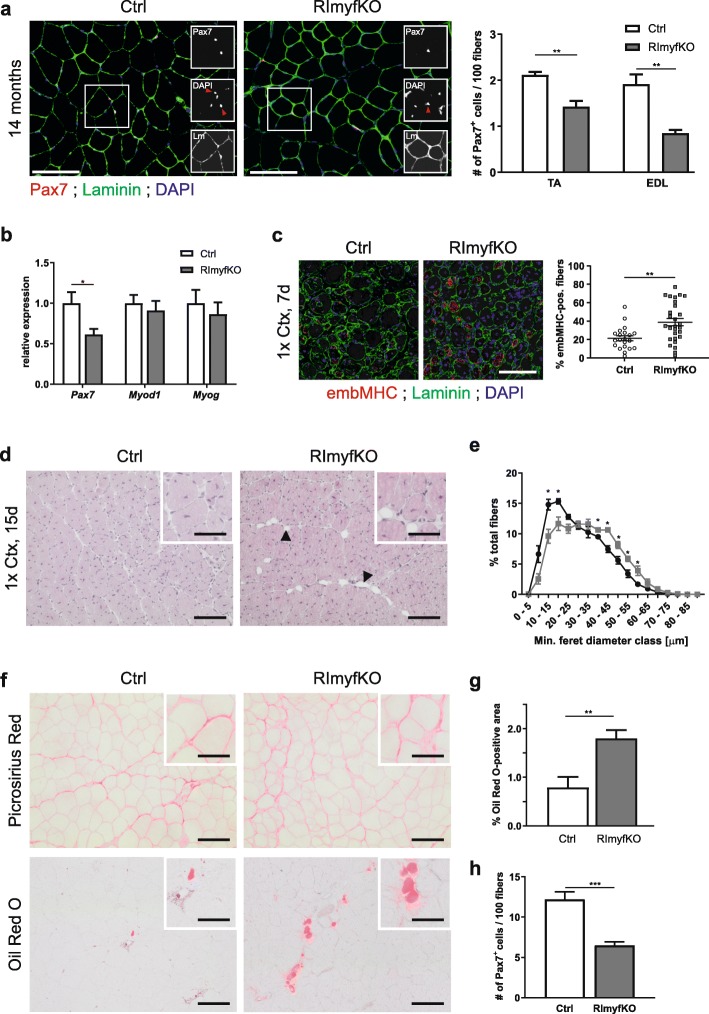Fig. 4.
The number of MuSCs and the regenerative capacity of muscle are diminished in 1-year-old RImyfKO mice. a Merged and single (insets) staining against Pax7 (red), laminin (green), and for DAPI (blue) of muscle cross-sections from 14-month-old Ctrl and RImyfKO mice. Red arrowheads in insets indicate DAPI-positive nuclei that are also Pax7-positive. Right panel: Quantification of the number of Pax7-positive cells/100 myofibers (n = 3–5). Scale bar, 100 μm. b Relative expression of transcripts encoding Pax7, MyoD, and MyoG in TA muscle from 14-month-old Ctrl and RImyfKO mice, normalized to Gapdh (n = 6). c–h Regenerative response of 1-year-old Ctrl and RImyfKO mice. c Cross-sections of TA muscle of 12-month-old Ctrl and RImyfKO mice, 7 days after Ctx injury (1x Ctx, 7 days), stained with antibodies against embMHC (red), laminin (green), and for DAPI (blue). Scale bar, 100 μm. Right panel: Percentage of embMHC-positive fibers (21 or 28 images; n = 3 control and 4 RImyfKO mice). d H&E coloration of TA muscle cross-sections of Ctrl and RImyfKO mice 15 days after Ctx injury of TA (1x Ctx, 15 days). Arrowheads point to the presence of adipocytes in regenerating RImyfKO muscle. Scale bar, 100 μm and 50 μm (inset). e Fiber size distribution of TA muscle, 15-day post-injury (n = 3). Grey line: Ctrl; black line: RImyfKO. f Picrosirius red coloration of TA muscle 15-day post-injury (top). Oil Red O staining of lipid droplets in TA muscle, 15-day post-injury (bottom). Scale bar, 100 μm and 50 μm (insets). g Quantification of relative area positive for Oil Red O staining (n = 5). h Quantification of the number of Pax7-positive cells/100 myofibers, 15 days after Ctx injury (n = 5). All data represent mean ± SEM. *p < 0.05, **p < 0.01, Student’s t test

